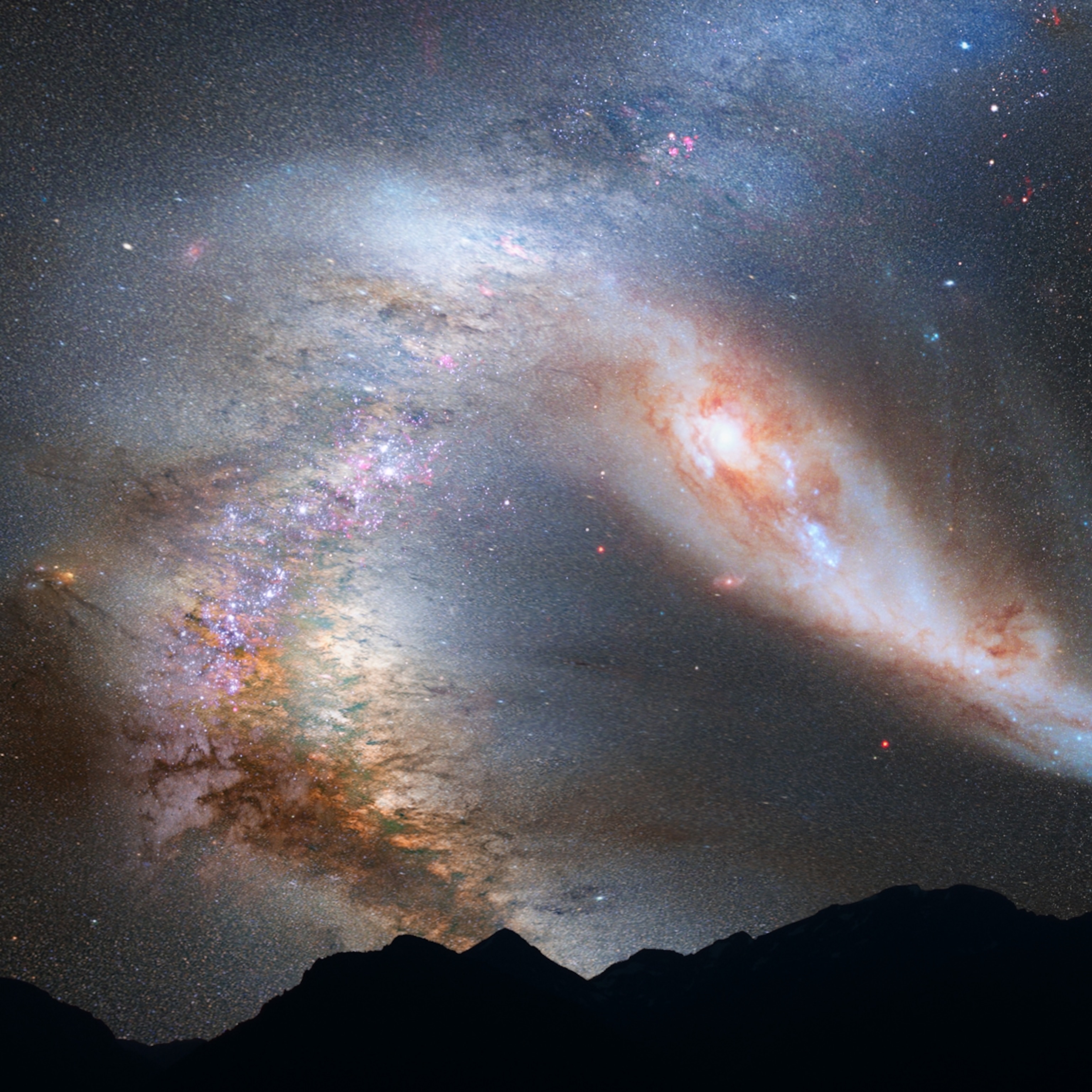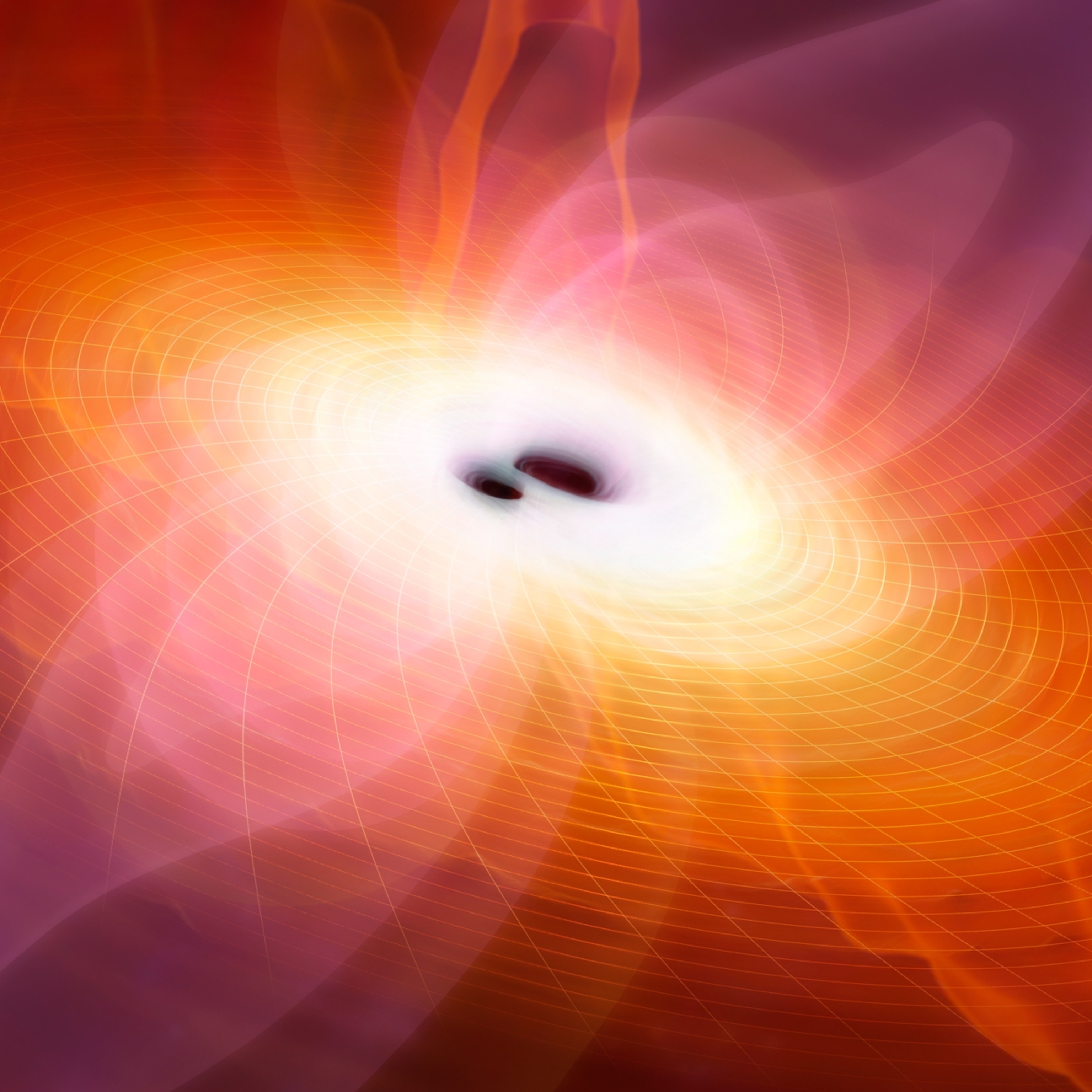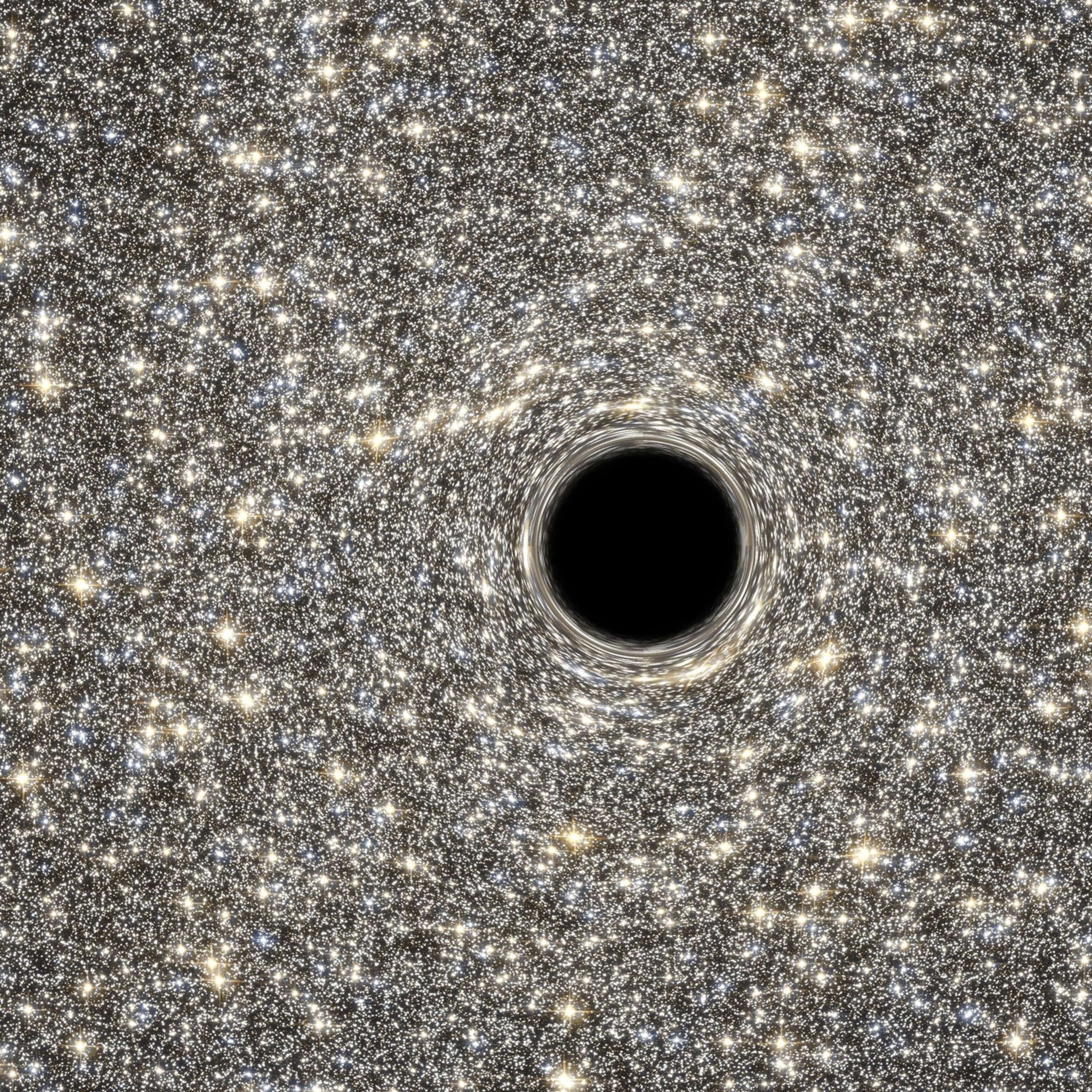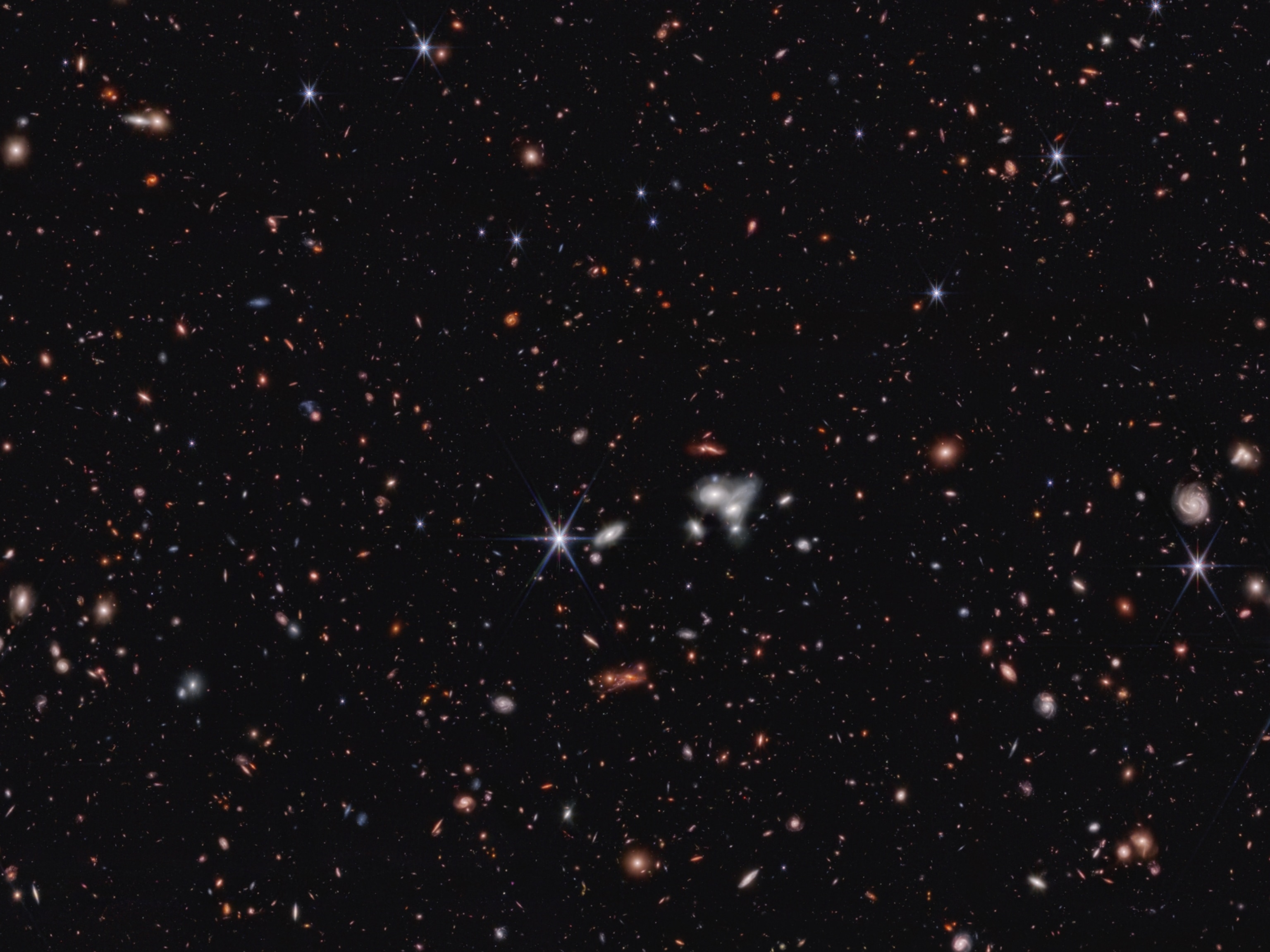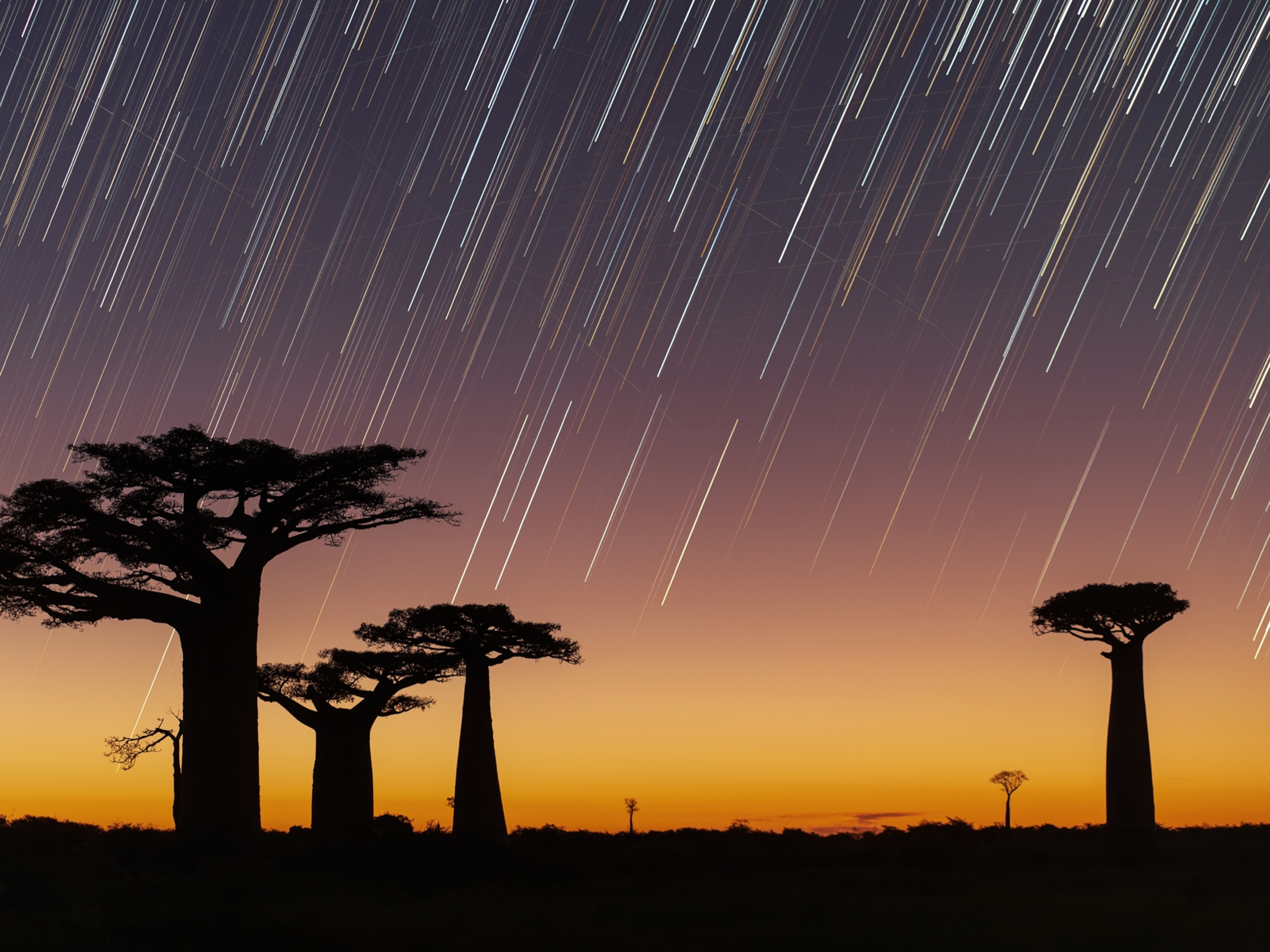Behold: The first picture of the black hole at the center of our galaxy
A global network of telescopes has captured the extreme environment surrounding the supermassive black hole in our cosmic backyard.

The Milky Way’s heart, like so many, is a mystery. At our galaxy’s core is a supermassive black hole packed with the heft of four million suns. Surrounded by a glowing disk of roiling matter, this bottomless pit of space-time is normally obscured by a shroud of orbiting gas, dust, and stars.
But scientists using a global telescope network known as the Event Horizon Telescope (EHT) have at last peered straight into the heart of the galaxy, and today they unveiled the first-ever image of this black hole’s silhouette. The observations, taken in 2017, were described in a suite of scientific papers published today in the Astrophysical Journal Letters.
“Today, the Event Horizon Telescope is delighted to share with you the first direct image of the gentle giant in the center of our galaxy, Sagittarius A*,” the University of Arizona’s Feryal Özel said during a press briefing announcing the achievement. “I met it 20 years ago and have loved it and tried to understand it since. But until now, we didn’t have the direct picture confirming that Sagittarius A* was indeed a black hole.”
The image shows a lopsided ring of radiant material hugging a pit of darkness—the shadow of the black hole known as Sagittarius A* (pronounced “Sagittarius A-star”). The image creeps right up to the black hole’s event horizon, the point of no return beyond which stars, planets, dust, and even light are lost forever.
“Light that is too close to the black hole, close enough to be swallowed by it, eventually crosses its horizon and leaves behind just a dark void in the center,” Özel said.
The Event Horizon Telescope’s latest image is the work of a global collaboration of more than 200 scientists. In 2019 the collaboration revealed a similar-looking image of a mammoth black hole at the heart of M87, a galaxy 50 million light-years away. That picture marked the first time the shadow of a black hole had been directly observed. Both images were made by combining data from eight observatories around the world, which effectively turned Earth into one big telescope.
Within minutes of the announcement, black hole researchers around the world lauded the milestone image. “Great image of the ring around the black hole!!!!!” Andrea Ghez, the astronomer at the University of California, Los Angeles who won the 2020 Nobel prize in physics for her study of Sagittarius A*, wrote in an email to National Geographic. “Bravo to the EHT team.”
With an image of a second black hole in hand, scientists can continue studying whether physics as we know it—and in particular, Einstein’s theory of general relativity—holds up in the extreme environment surrounding a supermassive black hole. And by comparing these new observations with those of M87, researchers can learn more about how black holes of different masses behave.
“I thought a lot about this black hole during my Ph.D.,” says Sera Markoff of the University of Amsterdam. ”You work on something, but it’s very abstract, and then suddenly it’s like—there it is. You’re looking at the black hole.”
A telescope the size of the world
In April 2017, scientists aimed radio telescopes from eight observatories at the heart of our galaxy. Scattered from Hawaii to Spain to the South Pole, the telescopes each observed Sagittarius A* as Earth’s rotation moved it into view. Once the observations were collected, the team combined data from each telescope—using a technique called very long baseline interferometry—and used the data to work on generating the image.
Making an image of Sagittarius A* was not as straightforward as creating one for M87’s supermassive black hole, which was observed during the same campaign. About 26,000 light-years away, Sagittarius A* may be the most massive thing in the galaxy, but it is pretty small as far as supermassive black holes go—about 1/1500 of the mass of M87’s central black hole.
If M87’s 6.5-billion-solar-mass black hole were plopped in the center of the solar system, it would obliterate everything up to 130 times farther from the sun than Earth; Sagittarius A*, on the other hand, wouldn’t even fill Mercury’s orbit.
Sagittarius A* is also heavily obscured by the dust and gas in the Milky Way’s center, and the local environment is incredibly variable—swirling, turbulent, flaring—which makes it hard to combine the observations into a single image. “Things around smaller black holes move faster,” says University of Arizona astrophysicist Dimitrios Psaltis. ”We were worried that the plasma around the black hole would not stay still for the eight hours it takes for the Earth to rotate and allow us to make an image.”
In the end, though, Sagittarius A* cooperated with having its portrait made.
The pit at the center of the galaxy
The new image reveals some key details about the gravitational drain at the center of our galaxy, including its spin orientation, which suggests the top of the black hole—or the bottom, depending on your perspective—is aimed almost directly at Earth. Its mass was also found to be consistent with previous estimates made from studying stars that orbit the black hole.
Somewhat perplexingly, the data also show that this supermassive black hole doesn’t seem to be launching a powerful jet of particles into the cosmos, which is a relatively common feature of such objects, including M87’s black hole.
“So there’s an ongoing debate now: Is Sagittarius A* really launching a jet and it’s just hard to see in the complicated environment because it’s so small and weak?” Markoff asks. “From everything we’re seeing, our models would predict that there would be a jet.”
As far as supermassive black holes go, Sagittarius A* is the most underfed object the EHT could observe. Rather than furiously devouring anything that strays too close, it is instead dormant, making do with morsels of stellar wind released by nearby stars, stealing enough crumbs to form a visible ring. Even so, multiple lines of evidence suggest that Sagittarius A* has been much more active in the past.
“We know black holes go through cycles of activity. We see this explicitly when we look at supermassive black holes in clusters of galaxies,” Markoff says. “We can see the bubbles that they blow during their active cycles in the surrounding gas, and they seem to blow these bubbles every hundred million years or so. So there’s an on-off switch.”
Such fits and starts from Sagittarius A* have left imprints on molecules in the interstellar medium that suggest its activity varies—at least moderately—on timescales of millennia, or even centuries. And while scientists know that a black hole’s activity varies with the amount of material it consumes, it’s not clear how that process works.
One of the ways scientists are untangling the chaotic maelstrom swaddling Sagittarius A* is by comparing it to the sun. The sun has significantly less mass, but its bubbling turbulence, twisted magnetic fields, flares, eruptions, and blistering gases could help astronomers learn more about the physics around supermassive black holes.
“Of course it’s a more extreme regime,” Markoff says. “But what I find is incredible is that a lot of what we’ve learned from solar physics can be applied in many ways to black holes—we actually have borrowed some techniques.”
All shapes and sizes
Scientists are now hoping that learning more about M87 and Sagittarius A*—their similarities and differences—will help them better understand a broader population of black holes. If theories hold up for objects of such different sizes, then scientists can be more confident that those theories accurately explain objects that can’t be seen so clearly.
“Verification is actually very difficult in our field. Normally we can’t fly to a black hole and be like, Hey, is this really what’s going on? But that’s kind of what we were able to do here,” Markoff says.
The two black holes are also allowing physicists to put Albert Einstein’s 1916 theory of general relativity to the test. Black holes are one of the theory’s predictions—and an outcome that Einstein himself was skeptical of. But aside from some mysteries within the quantum realm, general relativity seems to be holding up so far, even in extreme astrophysical environments where scientists might expect it to break down.
“If you take any two things in the universe that have a mass difference of 1,500, they don’t look at all the same—take a giant planet and a little asteroid, take a big galaxy and a little galaxy, an ant and an elephant, a small rock and a mountain,” Psaltis says.
“All theories in the world have a scale, and when you change from one scale to the other, they look different. Except for general relativity. It is the unique theory that has no scale. You can look at the tiniest and the biggest, and they behave exactly the same way.”

